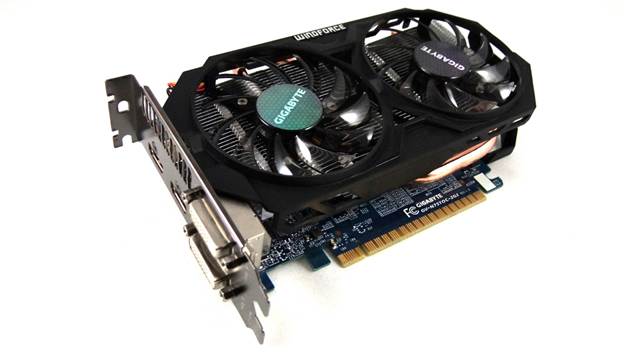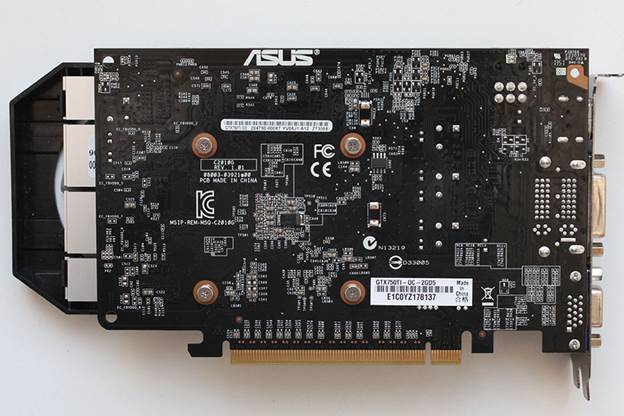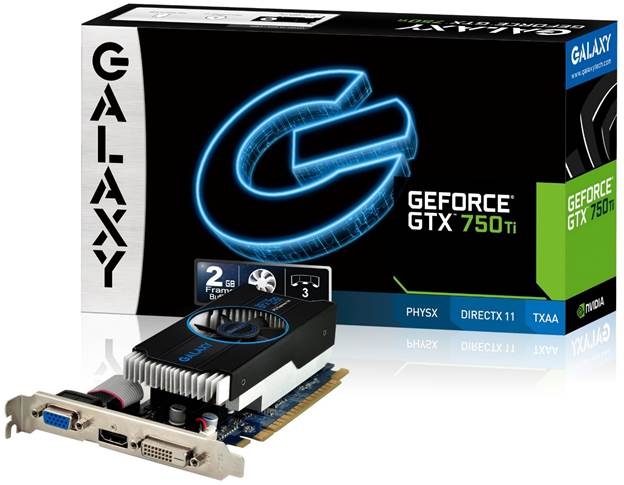It’s true,
we spill more ink writing about flagship GPUs, architectures, and the
high-priced graphics cards that house them than we do about entry-level and
mainstream cards. But for a vast majority of the general PC gaming populace,
the mainstream graphics card is what will ultimately end up in their systems.
GIGABYTE just sent us an intriguing option for those gamers who were
entertaining questionable means of making money just to play the games they
love: the GeForce GTX 750 Ti (model GV-N75TOC-2GI).

The card is obviously based on NVIDIAs MAxwell based GTX 750 Ti GPU. Gigabyte designed their own PCB, tweaked the card a hint and applied a WindForce model cooler on the product.
This card
features NVIDIA’s newest GPU architecture, codenamed Maxwell. The GM107 GPU
that serves as the brains behind this graphics card consists of 1.87 billion transistors.
Architecturally speaking, the GTX 750 Ti features five streaming
multiprocessors (SMMs, formerly SMX), each of which has four groups of 32 CUDA
cores. That’s a total of 128 CUDA cores per SMM, versus 192 homogenized CUDA
cores per each of Kepler’s SMX units. The four groups
of CUDA cores in each of Maxwell’s SMMs has access to dedicated warp schedulers
and registers, as well as their own texture cache. Although it’s not as fast as
the GTX 660, the GTX 750 Ti has a 75W TDP, compared to the GTX 660’s 140W TDP.
Like the
reference design from NVIDIA, GIGABYTE’s card has a 128-bit memory bus and 2GB
GDDR5, clocked at the stock 1,350MHz. The stock core and boost clocks are
1,020MHz and 1,085MHz, respectively, but GIGABYTE wasn’t about to pass up the
opportunity to milk a little extra performance from this card’s more
energy-efficient GPU. This card boasts core and boost clocks of 1,033MHz and
1,111MHz, respectively.

The 'standard' GeForce GTX 750 will get 512
CUDA cores,
32 TMUs and 16 ROPs, with just 1GB graphics memory though
As you’d
expect, the cooler on this card also gets some special treatment. It features a
WINDFORCE 2X cooler, which consists of a pair of ultra-quiet 75mm PWM fans and
a large, 8mm S-shaped copper heatpipe surrounded by a
multitude of aluminum fins. An angular black plastic heat shroud features the
WINDFORCE logo and matches the style we’ve seen on most of the recent GIGABYTE
cards we’ve tested. For power, this card relies on a single 6-pin PCI-E power
connector. Overall, GIGABYTE’s GTX 750 Ti measures 7.5 inches long. On the
backplane, you’ll find a dual-link DVI-I, DVI-D, and two HDMI ports.
Like many
of the GIGABYTE cards we see, this GTX 750 Ti features Ultra Durable 2 VGA
technology, which consists of Japanese solid state caps, a lower RDS(on) MOSFET design, and ferrite core chokes. All this
helps the card perform better, run cooler, and overclock more reliably.

Galaxytech GeForce GTX750 Ti OC 2GB Beautiful
card and will fit in my low-profile HTPC case
This card
couldn’t quite handle the game benchmarks we ran at a stratospheric 2,560 x
1,600, but its performance improved dramatically at 1,920 x 1,200, which means 1080p is probably this card’s sweet spot when it comes to
modern games. With GIGABYTE’s new GeForce GTX 750 Ti, gamers on a budget can
get a very compelling experience.
|
Test System Specifications:
· Processor: Intel Core i7-4960X; · Motherboard: GIGABYTE GA-X79-UP4; · RAM: 16GB Patriot Viper Xtreme DDR3-1866; · Storage: 1TB Western Digital Black
HDD; · OS: Windows 8 Enterprise (64-bit)
|